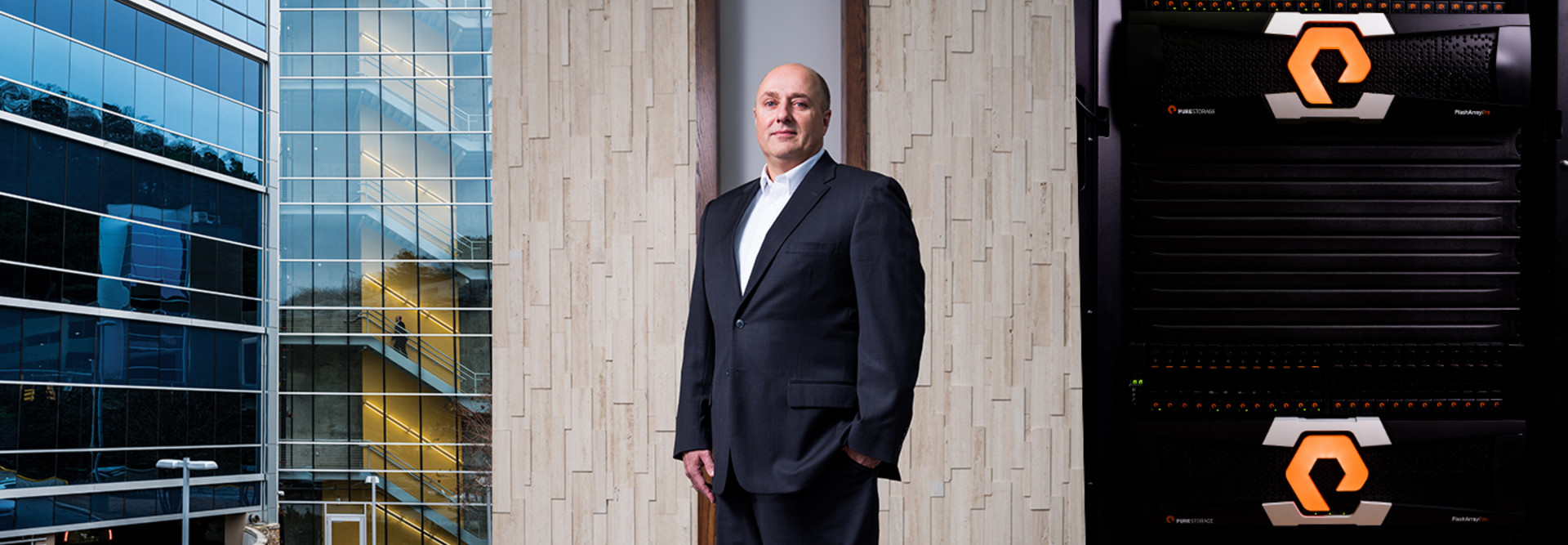In Healthcare, Flash Storage Pushes IT Performance Forward
In 2016, Brookwood Baptist Health needed a storage refresh to optimize its Epic electronic health record implementation. Three years after rolling out the EHR across its five hospitals and 60 primary and specialty care clinics, the Birmingham, Ala., organization felt it could benefit from more speed and improved performance. While in 2013 Brookwood Baptist switched from spinning disks to a solid-state drive to house its Epic database, its CTO, John West, believed an all-flash array was the answer for the organization’s entire EHR environment.
“With spinning disks, we would have to put too many drives across multiple arrays to get the kind of speed you could get on solid-state drives, so moving to flash just made sense,” West says. After looking at several options, Brookwood Baptist tapped Pure Storage to improve both overall performance and end-user satisfaction. In addition to storing the organization’s EHR database, the solution now enables simultaneous compression and data deduplication.
It also provides uptime peace of mind, says West, who called downtime one of Brookwood Baptist’s biggest concerns. “For our EHR, we cannot have any downtime, and we haven’t had any, planned or unplanned, since implementing the new system,” he says. “We’re also seeing more performance and were able to save money on space and cooling. It’s wasted money to put anything but flash arrays in for mission-critical applications.”
For Brookwood Baptist and other healthcare organizations looking to give their IT performance a shot in the arm, flash storage is proving to be an effective solution.
SIGN UP: Get more news from the HealthTech newsletter in your inbox every two weeks!
All Flash Storage Can Satisfy the Need for Speed
Speed and reliability (or a lack thereof) were considerable factors in an all-flash storage deployment at Henry Mayo Newhall Hospital. Operational consistency while using a hybrid array of spinning disks and flash was proving to be a business problem, says Greg McCoy, manager of network infrastructure for the 238-bed nonprofit community hospital based in Valencia, Calif.
“At times throughout the day and night, clinicians would say the EHR system’s performance was slow,” he says. “It could be for 10 minutes or an hour, but it was happening.”
While Henry Mayo didn’t start out looking to move to a flash-only configuration, industrywide price reductions led them to use an infrastructure switch and storage solution from IBM and Cisco Systems.
Today, the hospital sees consistent performance with its EHR and expects similar results as it deploys a new virtual desktop infrastructure.
“We’ve been piloting this for six months and we haven’t seen any degradation at all, even though the VDI is riding on the same infrastructure as our EHR,” McCoy says. “Everyone can get into the systems and get to the screens they need quickly. Everyone is happy, and we’re no longer getting calls telling us that the EHR is slow.”

Until recently, moving to an all-flash array was so expensive that it wasn’t feasible for many organizations, says W. Curtis Preston, a senior analyst at Storage Switzerland. But pricing has become more commoditized, with good results, he says.
“Today, anyone who is considering a renewal on a lease or has equipment that has fully depreciated should evaluate some type of flash,” Preston says.
What’s more, some healthcare organizations have achieved significant benefits from their move to flash, he says. Time-to-chart, for instance, is a metric that can add hours to a provider’s day.
“If your time-to-chart speeds up by 40 seconds per patient, and a doctor sees 20 patients a day, that is a significant amount of time that can be used for another patient,” Preston says.
Flash Arrays Bolster IT Backup Plans
Shriners Hospitals for Children is using its flash implementation to help with a different problem: data backup and management for its 22 locations, geographically dispersed throughout five time zones and three countries.
Prior to flash, the Tampa, Fla.-based organization’s biggest problem with backup was its sheer scope, says Gene D’Amore, vice president of hospital operations and CIO. “Our biggest challenge was definitely data backup,” he says. “Everything is centralized out of the home office and distributed. It’s also a challenge because we have some storage out at the hospitals, some at headquarters and some at the data center.”
The health system, which comprises roughly 6,000 users, switched to a Dell EMC flash implementation to streamline the backup process, which D’Amore says greatly improved boot time.

“Now, boot time is a few seconds, compared with 30 to 40 seconds previously,” he says.
Noise, space constraints and energy use have fallen too, he says. “There are fewer moving parts and no vibration at all. The failure rate is way down, and file copy is quicker.”
Health IT Staff Get Hours Back with Upgraded Storage
Upgrading and maintaining storage infrastructure is proving to be less of a burden for healthcare IT departments that have turned to flash. Brookwood Baptist Health’s IT department needed only two hours to install its new technology.
Meanwhile, Henry Mayo’s McCoy says his organization was able to order its array, have it delivered, get it up and running and start building virtual machines on it within four weeks.
“Making everything work together like that — networking, storage, compute — would normally take months and months,” McCoy says.
Henry Mayo’s flash implementation saves McCoy’s IT team between 15 and 20 hours each week. “In the past, multiple teams had to go out when there was an issue. Network engineers, server engineers — lots of different people in infrastructure had to touch the system. Now we only need one person to troubleshoot,” he says.
Brookwood Baptist benefits from similar savings, West says.
“It definitely simplifies management. You don’t need a lot of highly trained folks,” he says. “Using flash, we didn’t eliminate any positions, but the 120 full-time IT employees that we have can do more during daylight hours, and there is more time for cross-training. It gives storage specialists their life back.”









